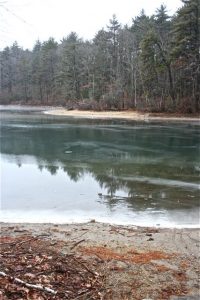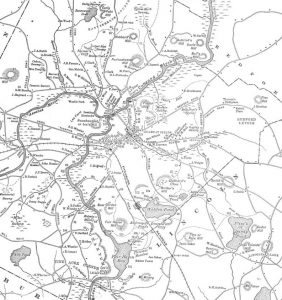Chapter 7 – Sensing Walden
Most of Thoreau’s nature writing in Walden comes from his scientific sojourning stage between late 1850 and manuscript submission in 1854. During this stage, his daily technique was to leave the village, immerse his senses in Nature, allow his scientific intellect to engage, explain what he noticed, and condense the sum total into his Journal. Thoreau’s daily practice as a theory-driven field scientist features his preference for light and sight, and to a lesser extent, sound and hearing. His powers of his analytical deductions and synthetic inductions are remarkable.

View to the west across the thin ice of Thoreau’s Cove to what he called his "pond-side." It was here on land owned by Cyrus Hubbard, rather than at the head of the cove on land owned by Ralph Waldo Emerson, that Thoreau accessed Walden Pond and made most of his shoreline observations.

Herbert Gleason’s 1906 map of Thoreau’s sojourning country (cropped), showing many features of his text. Walden Pond is just south of center. The Assabet and Sudbury Rivers merge at Egg Rock. Courtesy Concord Free Public LIbrary.